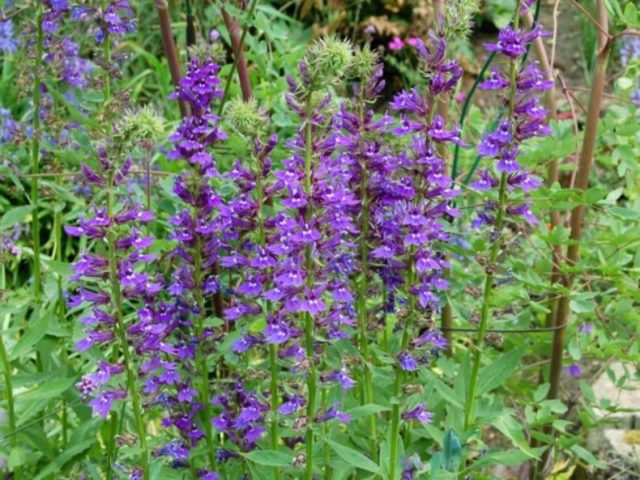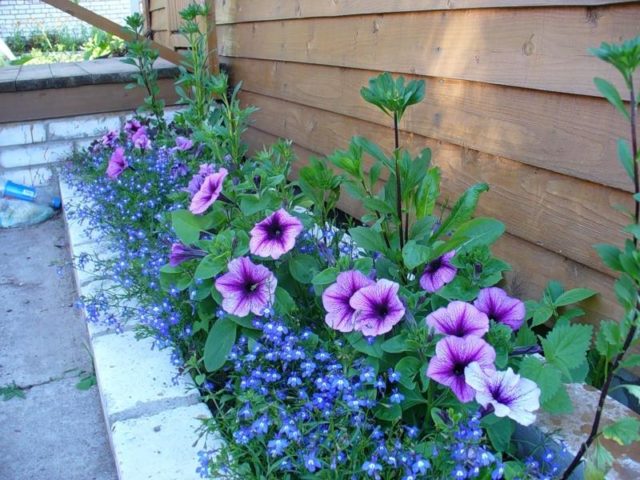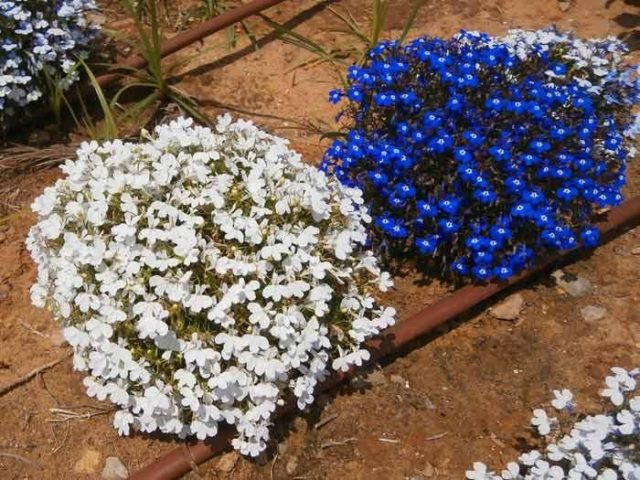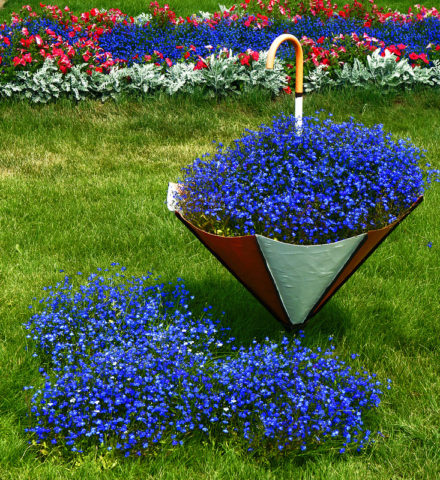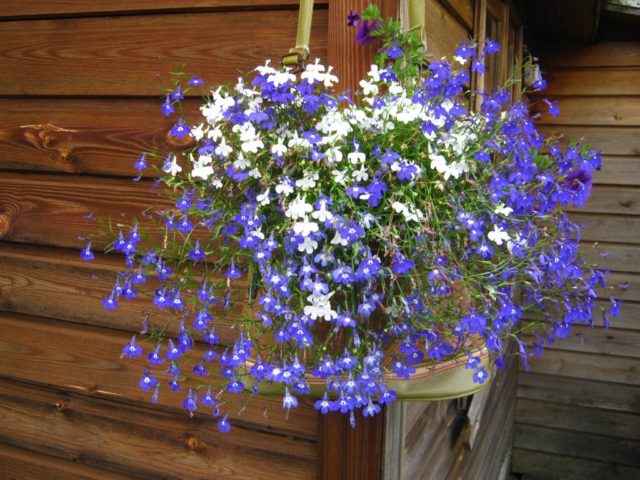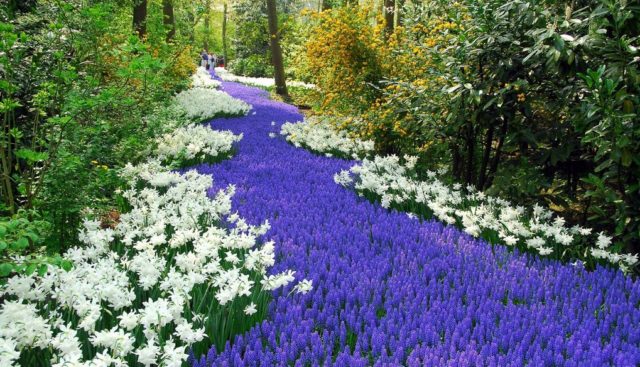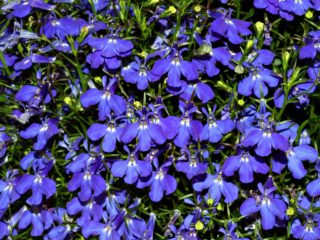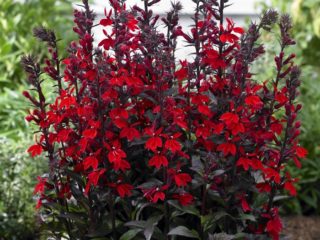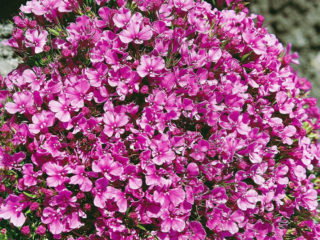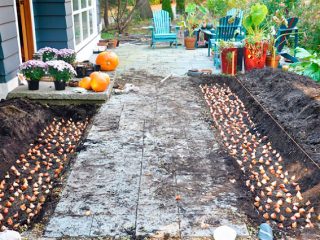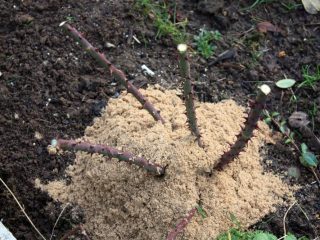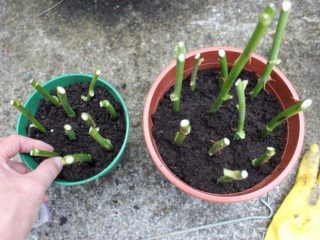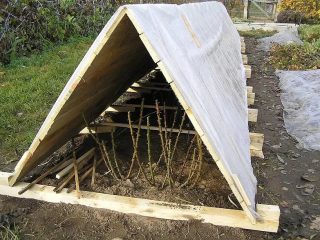Content
- 1 General description of perennial lobelia
- 2 Types and varieties of perennial lobelia with photos and descriptions
- 3 Features of reproduction
- 4 Application in landscape design
- 5 Planting perennial lobelia
- 6 Growing perennial lobelia seedlings from seeds
- 7 Planting and caring for perennial lobelia in open ground
- 8 Pests and diseases
- 9 Conclusion
- 10 Reviews
Lobelia perennial is a low herbaceous plant with small, abundant flowers of various shades (from white to lilac-blue). The plant is easy to care for - it is enough to periodically water it and feed it 3-4 times a season. The bushes bloom continuously from June to mid-September.
General description of perennial lobelia
Lobelia perennial is a herbaceous plant that resembles a small bush (up to 20-25 cm in height), densely strewn with flowers. Main colors:
- white;
- light pink;
- blue;
- rich blue;
- violet;
- lilac;
- purple.
It is decorated not only with flowers, but also with elegant small lance-shaped leaves.They have a rich grassy green hue, against which the petals look harmonious.
At the end of September, lobelia produces seeds in dense and dry capsules. They can be collected and stored in the refrigerator. Germination remains for 2-3 years. Almost all varieties can be propagated independently - to do this, they first grow seedlings and then transfer them to open ground (April - May).
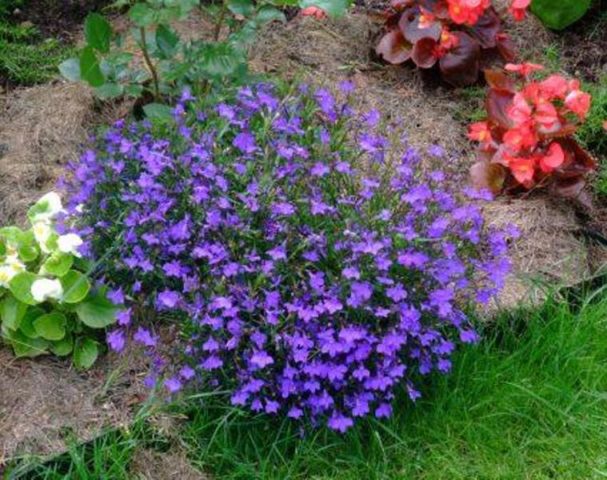
Lobelia flowers reach 2-3 cm in diameter
Types and varieties of perennial lobelia with photos and descriptions
There are more than 300 varieties of perennial lobelia, with only 20 varieties grown in the garden. The most popular of them are:
- lobelia erinus;
- Beautiful;
- Sapphire;
- Purple;
- Red;
- Bird home;
- Blue River.
Perennial lobelia Erinus (pictured) has flowers of different colors:
- purple;
- blue;
- pale blue;
- white.
They can be used both in single plantings and in flower arrangements. There are hanging varieties that are hung in flower pots on the veranda, terrace, or next to the entrance.

Perennial bushes are lush and beautiful
Lobelia the Beautiful is one of the most winter-hardy varieties that can be grown in most regions of Russia, including Siberia, the Urals and the North-West. It has flowers up to 3 cm in diameter, the colors are red, pink, purple.
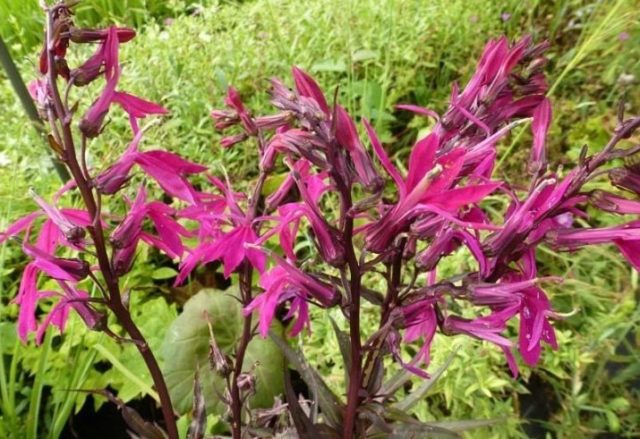
A distinctive feature of this beautiful variety is a powerful, tall bush up to 100 cm high.
Lobelia Sapphire is so named because of its rich blue color. It can be grown in open ground and at home. The flowering is long-lasting, very lush, the bushes are large. In Russian conditions, it does not tolerate frost well.Therefore, in winter, perennial lobelia should be taken to a heated veranda, insulated balcony or loggia.
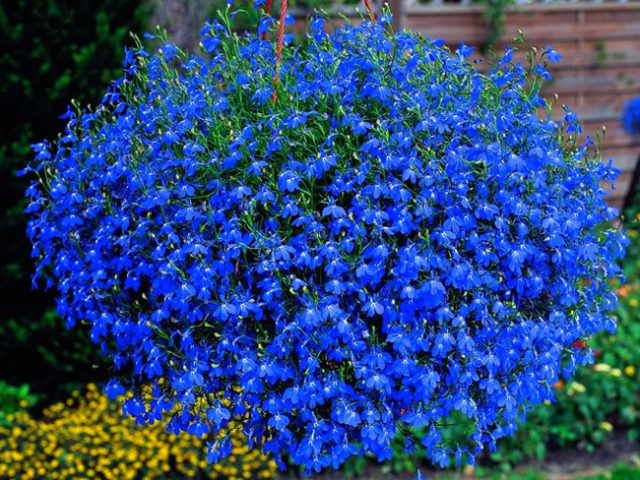
Sapphire perennial bushes look very impressive
Lobelia purpurea is also called cardinal lobelia. It has an uncharacteristic bush shape - erect stems with lush bright red flowers. A very showy, attractive bush that is best planted in the center of the garden or in another prominent place.

This variety loves water very much, so it is better to plant it next to a country pond or other body of water.
Another representative with bright colors is red lobelia. A very powerful, tall bush with large shoots dotted with attractive flowers. It is characterized by moderate winter hardiness; it can be left in open ground, but be sure to cover it with spunbond, foliage and other available materials.
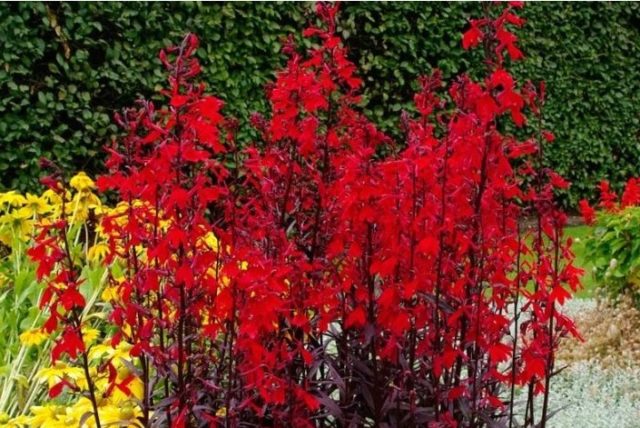
The height of the red lobelia bush reaches 100-150 cm
For lovers of delicate shades, the Swallow's Nest variety has been specially created with flowers of rich blue and lilac shades. The stems are small in size, reaching a height of 25 cm. Winter hardiness is low, so it is better to additionally cover them with spandobond, and in cold regions, be sure to move them to a heated room.
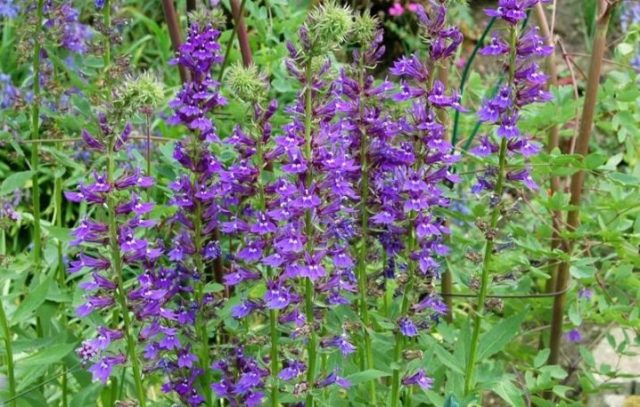
Lilac flowers look good against the background of soft green leaves
Another interesting variety of perennial lobelia is Blue River. The petals are colored in shades of white, blue and lilac. The bush is quite tall (up to 60-70 cm), the flowers are small (2 cm in diameter), with a very elegant shape and original color.
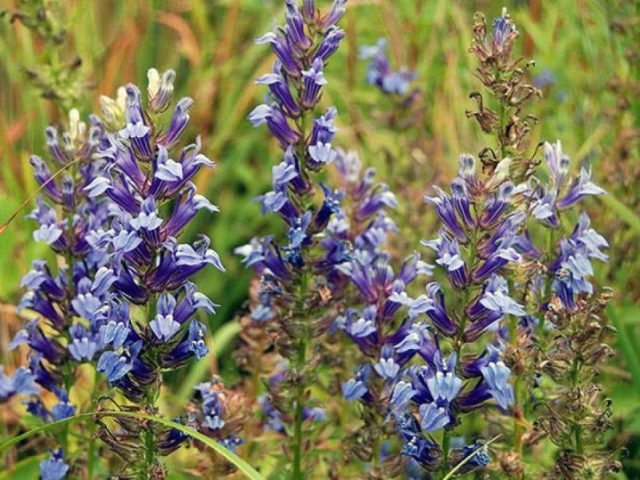
The flowers have double colors, making the bush look picturesque
Features of reproduction
There are several ways to propagate this plant:
- growing from seeds;
- cuttings (green shoots);
- dividing the bush.
Seeds for seedlings are planted in February or March, first they are grown at a temperature of 24-25 ° C, then they are hardened, and in early May they are transplanted into open ground. Green cuttings are obtained in the summer, germinate, and then transplanted to a permanent location in the fall. Dividing the bush is carried out only in adult plants at least 3-4 years old. Usually the procedure is practiced in the spring. Each division should have 2-3 strong shoots.
Application in landscape design
The stems of perennial lobelia begin to branch from the roots, they grow approximately equally, so as a result the bush quickly takes the shape of a beautiful, symmetrical ball. It densely covers the soil, thanks to which the plant is used in a variety of ways:
- For decorating nondescript corners of the garden.
- In compositions with other colors (borders, mixborders).
- Planting in rows (of one or more varieties of perennial lobelia), especially along paths for garden zoning.
- Planting in ridges or unusual flower beds.
- Planting in flowerpots and pots. The containers can be placed in any part of the garden, which is especially convenient for creating original compositions that can be changed at will.
Lobelia combines with hostas and other ornamental shrubs
Low-growing flowers perfectly frame a flower garden or flower bed
Flowers of blue shades combine harmoniously with white
Planting perennial lobelia
One of the most effective ways to grow perennial lobelia is to plant seeds for seedlings. Seed germination is almost 100%, and seedlings are easy to propagate; this can be done at normal room temperature.
Deadlines
Before transferring to open ground, seedlings are grown for 50-60 days.Therefore, usually the seeds begin to be sown at the end of February or at the beginning of March in order to replant them at the end of April - beginning of May.
Even if the deadline is missed, you can plant the seeds in April. Then flowering will begin after 3-4 weeks. But if the gardener plans to collect seeds, this method will not work, because... They ripen at the end of September, and in October they may already die due to early frosts.
Preparing containers and soil
It is most convenient to grow perennial lobelia seeds in individual peat tablets. The fact is that they are very small, and picking seedlings one at a time is almost impossible. Therefore, it is better to immediately plant them in tablets or small pots, cassettes and other containers.
The soil can be purchased at the store or made independently based on peat and garden soil in a 1:1 ratio. It’s a good idea to add 2-3 pinches of sand and 1 whisper of wood ash to the soil. The soil is first disinfected in a 3% solution of hydrogen peroxide or frozen for 5 days. The use of organic components (humus, compost) is not recommended.
Planting perennial lobelia seeds for seedlings
The seeds of perennial lobelia are very small, so they are handled with a moistened toothpick. Sequence of actions when landing:
- Containers are disinfected in a weak solution of peroxide or potassium permanganate, and drainage holes are made.
- The soil is thoroughly crushed and poured into prepared containers.
- Transfer the seeds (2-3 pieces) and leave them on the surface - no need to sprinkle them with soil.
- Moisten generously.
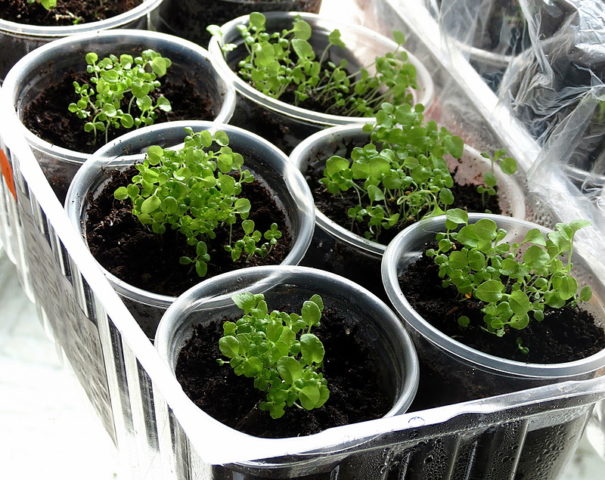
Perennial lobelia seedlings are best grown in individual pots
Growing perennial lobelia seedlings from seeds
Containers with seeds are covered with film with holes or glass and put in a warm place. First, it is kept at a temperature of 25 °C, then it can be reduced to 20-22 °C. The instructions are quite simple:
- The soil needs to be moistened regularly.
- It is advisable to illuminate for up to 12-13 hours a day.
- After three leaves appear, they are planted (if the planting is too dense).
- The greenhouse is periodically ventilated, and the film is finally removed after a month.
- 2-3 weeks before transfer to open ground, they begin to harden - transfer to a balcony or open air (desirable temperature 15-18 ° C).
Planting and caring for perennial lobelia in open ground
In the south, seedlings are transferred at the end of April, in the middle zone - at the beginning of May, in the Urals and Siberia - at the end of the month. The place for transplantation should be open and sunny, weak partial shade is allowed. It is better to choose a small hill, because... Lobelia does not like lowlands.
Transfer
The transplantation technology is simple - perennial seedlings, together with a clod of earth, are transferred into pre-prepared holes (15-20 cm interval). At the digging stage, complex mineral fertilizer can be applied to the site. Organics should not be used.
Watering and fertilizing schedule
Water lobelia abundantly and regularly. In the absence of rain, 1-2 times a week, and during drought, three times. You should not over-moisten the soil, because... this can negatively affect the roots.
Fertilizing is applied 3 times per season:
- Immediately after transplantation - nitrogen or complex mineral fertilizer.
- During flowering - superphosphates and potassium salt (every 3 weeks).
- The last potassium phosphate feeding is carried out in mid-August.
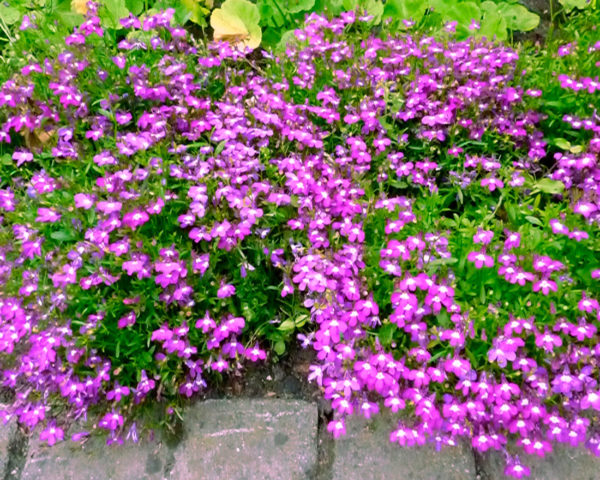
Regular fertilization guarantees long-lasting, stable flowering of perennial lobelia
Weeding and loosening the soil
Typically, perennial lobelia quickly crowds out weeds. But periodically, 2 times a month, it is recommended to carry out additional weeding. You need to loosen the soil with the same frequency - this is especially important to do after applying fertilizers.
Topping
Perennial lobelia bushes grow quite quickly and luxuriantly, so they need to be pinched to give them the correct shape. Strongly protruding shoots are shortened by 5-7 cm or more - it is necessary for the plant to take the shape of a ball. In the case of cardinal, purple and other upright varieties of lobelia, pinching is not necessary. However, it would not be superfluous to slightly shorten the branches that stand out from the general row.
Preparing for winter
Wintering features of perennial lobelia depend on climatic conditions:
- Leaving all types of perennial lobelia in the open ground is allowed only in the southern regions.
- In Siberia and other areas with frosty winters, almost all varieties are best transferred home.
- In the Moscow region and the middle zone, everything depends on the characteristics of a particular variety. Winter-hardy bushes are cut almost to the root (2-3 cm are left) and covered with fallen leaves.
Pests and diseases
Different varieties of perennial lobelia rarely suffer from diseases or pests, but sometimes they are affected by fungal infections:
- rust;
- powdery mildew;
- root rot.
Therefore, immediately after transplanting seedlings into open ground, it is advisable to treat them with any fungicide, for example, “Ordan”, “Tattu”, “Profit”. Repeated treatment is carried out only if there are signs of disease (spots on leaves, yellowing, wilting).
The most common pests are thrips and slugs.
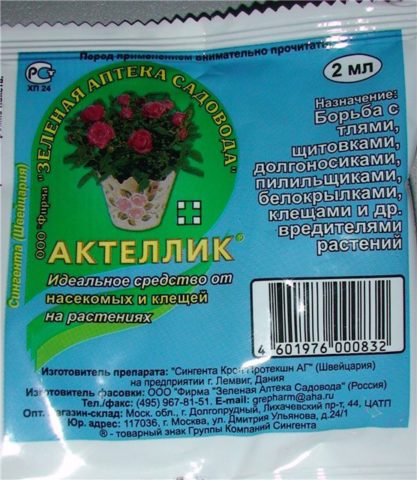
Insects can be controlled using any insecticide
“Aktellik”, “Fitoverm”, “Confidor”, “Decis” cope well with the task. Folk remedies help get rid of slugs. You can scatter stone chips or crushed eggshells near the planting row.
Periodically, perennial lobelia bushes should be inspected for signs of disease.
Conclusion
Perennial lobelia is one of the most beautiful plants, which, thanks to its lush flowering, will decorate the garden throughout the summer and even in autumn. You can grow seedlings of any variety at home. In the future, caring for the bushes is not difficult, but for the winter in most regions they should be carefully covered or moved home.
Reviews
